Fix Windows Update Error 0x80073701
Get Free Scanner and check your computer for errors
Fix It NowTo fix found issues, you have to purchase the full version of Combo Cleaner. Free trial available. Combo Cleaner is owned and operated by Rcs Lt, the parent company of PCRisk.com read more.
Getting Error 0x80073701 When Updating Windows 10? Here Are 5 Ways You Can Fix That
Error 0x80073701 is ERROR_SXS_ASSEMBLY_MISSING, which means that some system files are missing, causing the update to fail. If you're looking for ways to fix this error, see the guides below.
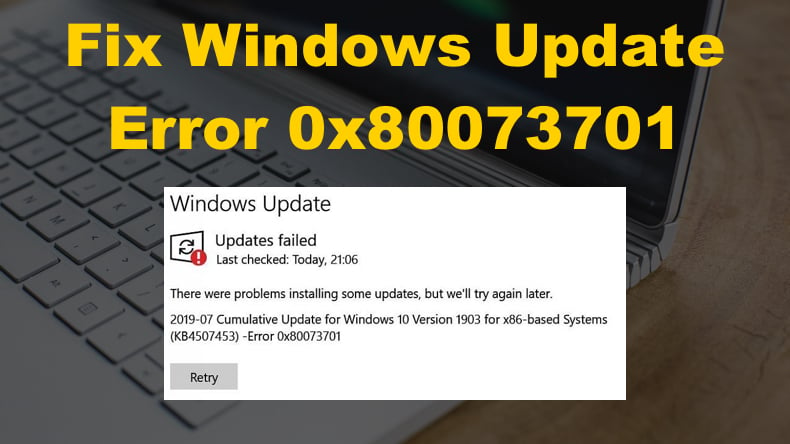
One of the oldest cases of users getting error 0x80073701 was way back in 2016 with 2016-10 Cumulative Update for Windows 10 Version 1607 (KB3197954 and KB3200970.) But, that won't be the last time users encounter this error. Many users got this error when installing the 2016-12 Cumulative Update for Windows 10 Version 1607 (KB3206632).
Many users experienced error 0x80073701 back in 2019 when Microsoft released the 2019-07 Cumulative Update for Windows 10 Version 1903 (KB4507453). Then, in 2020 there were reports of users getting error 0x80073701 when trying to install 2020-03 Cumulative Update for Windows 10 Version 1909 (KB4541335).
However, it wasn't the end of error 0x80073701 coming up. Many users still encounter 0x80073701 as it occurs due to missing system files. System files can become corrupted or deleted due to various reasons.
The good news is that you can fix error 0x80073701. Windows 10 has various built-in tools you can use to resolve the underlying issue causing error 0x80073701.
Video Guide on How to Fix Windows Update Error 0x80073701
Table of Contents:
- Introduction
- Solution 1. Run Windows Update Troubleshooter
- Solution 2. Flush the SoftwareDistribution Folder
- Solution 3. Perform a System File Checker (SFC) Scan
- Solution 4. Perform a Deployment Image Servicing and Management (DISM) scan
- Solution 5. Reset Windows Update Components
- Video Guide on How to Fix Windows Update Error 0x80073701
Download Computer Malware Repair Tool
It is recommended to run a free scan with Combo Cleaner - a tool to detect viruses and malware on your device. You will need to purchase the full version to remove infections. Free trial available. Combo Cleaner is owned and operated by Rcs Lt, the parent company of PCRisk.com read more.
Solution 1. Run Windows Update Troubleshooter
Errors such as 0x80073701 can be solved using the built-in Windows Update Troubleshooter. Windows Update Troubleshooter is designed to troubleshoot Windows Update bugs. As such, it's an effective tool when trying to fix errors such as error 0x8007370.
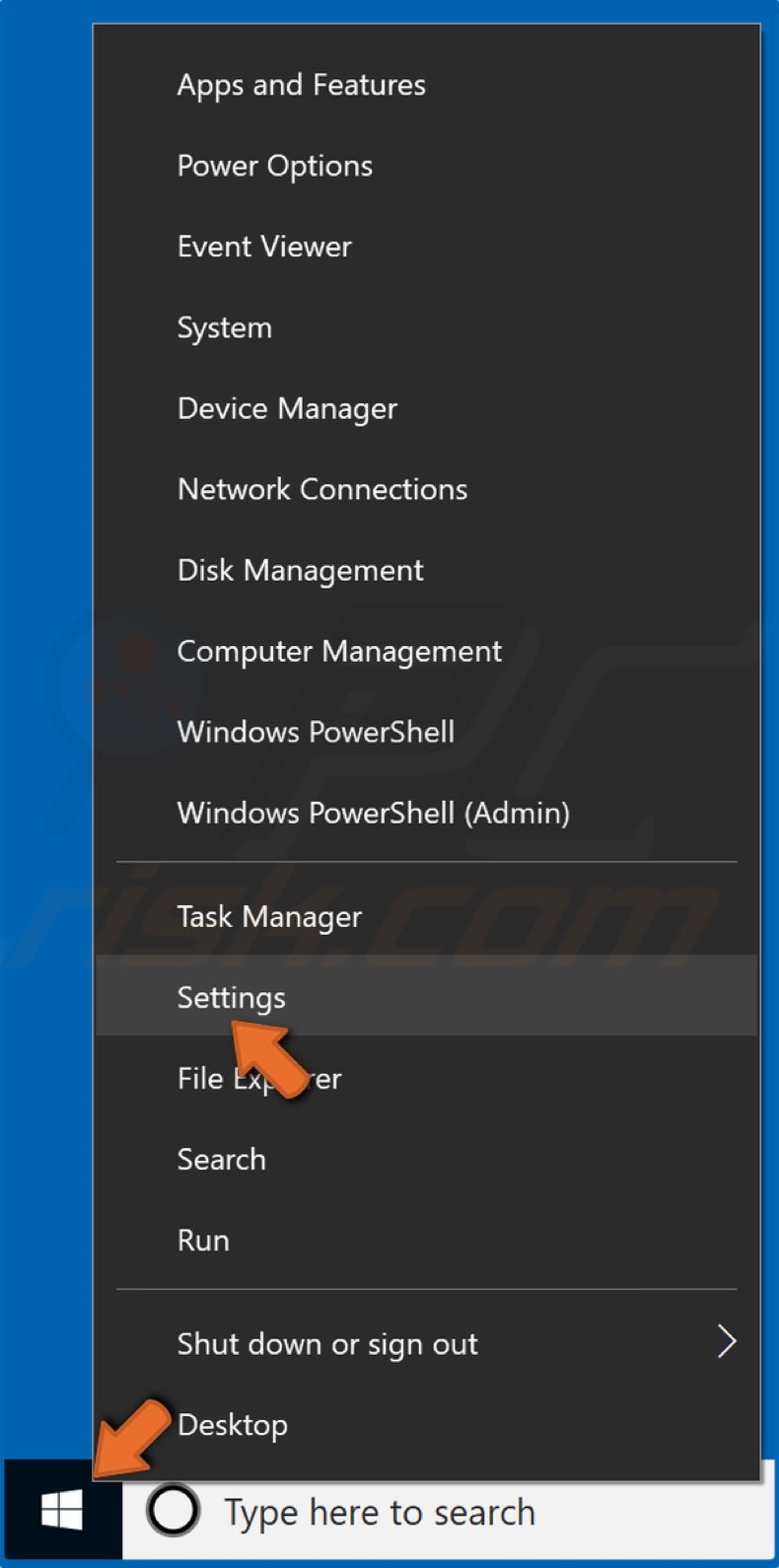
1. Right-click the Start button and click Settings.
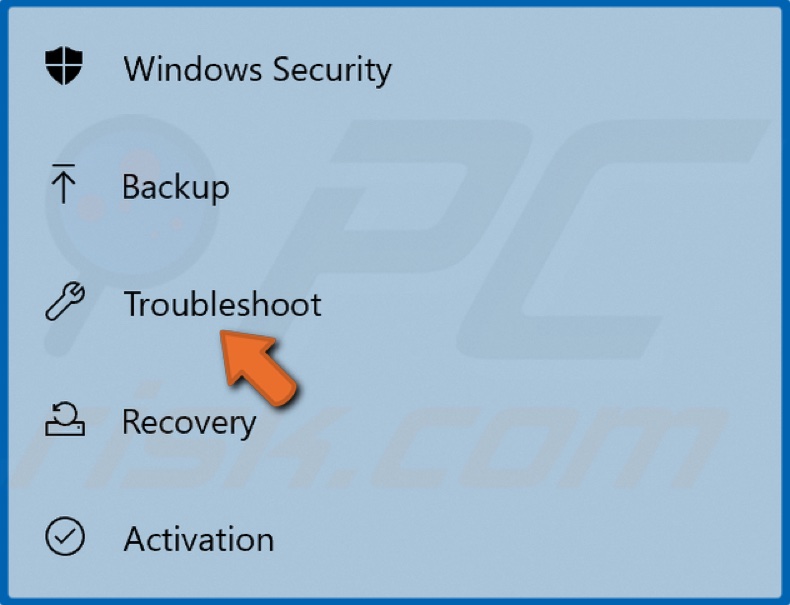
2. In the left pane, select Troubleshoot.
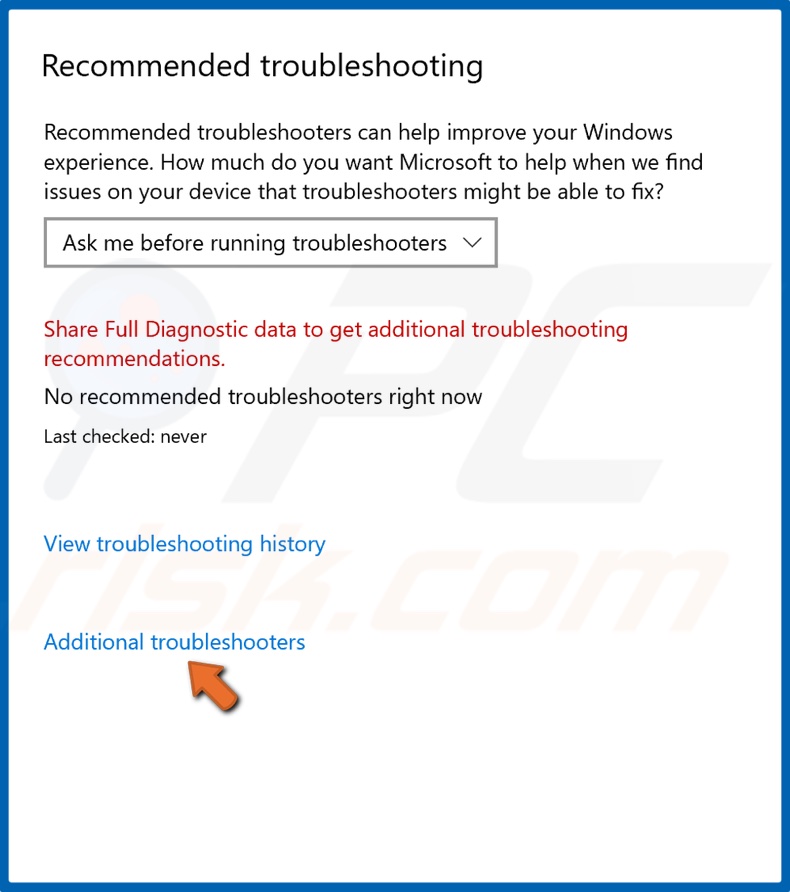
3. Then, in the right pane, click Additional troubleshooters.
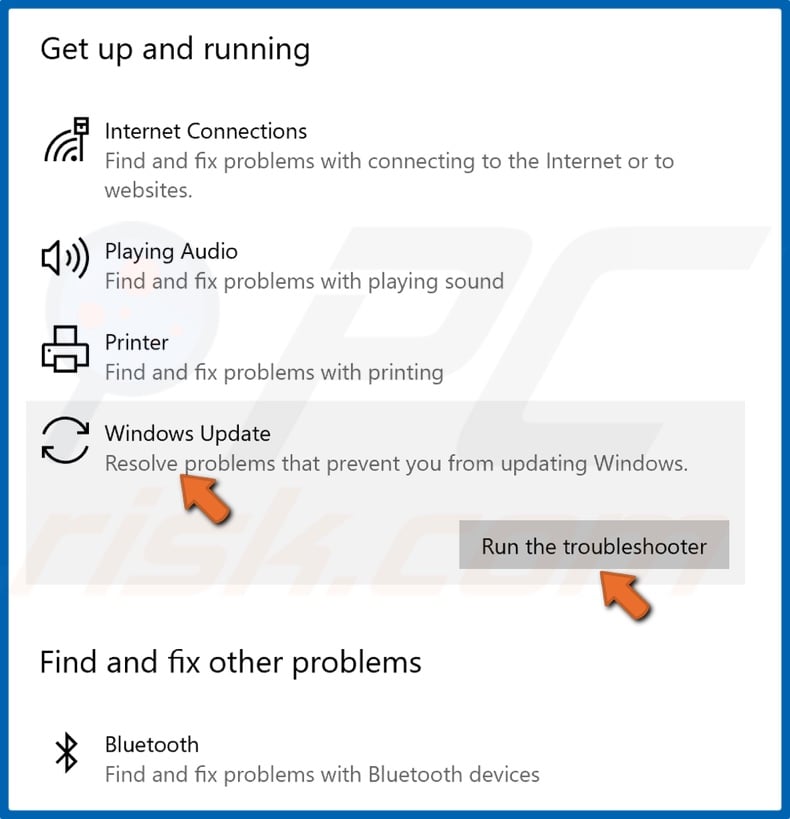
4. Select Windows Update and click Run the troubleshooter.
5. The troubleshooter should provide fixes and apply them automatically.
Solution 2. Flush the SoftwareDistribution Folder
To clean the SoftwareDistribution, make sure that the Microsoft Store isn't running. Reboot your PC to ensure that the Microsoft Store or any other process won't interfere with applying this fix.
1. Simultaneously hold down Windows+R keys to open Run.
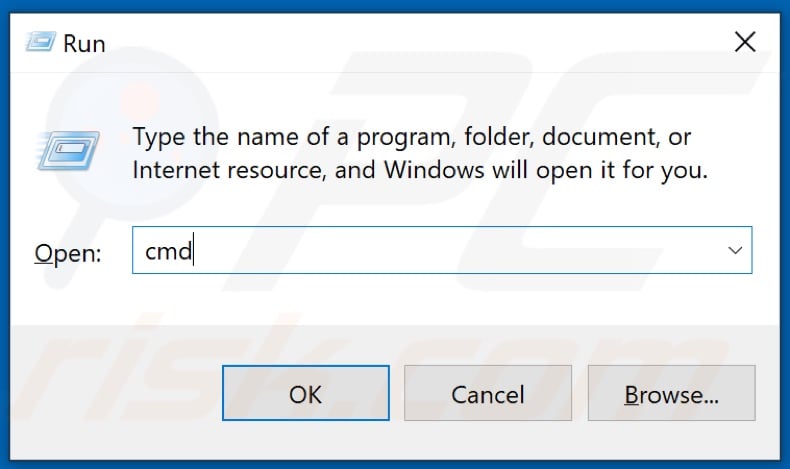
2. Then, in the Run dialog box, type in CMD and hold down Ctrl+Shift+Enter keys to open the elevated Command Prompt.
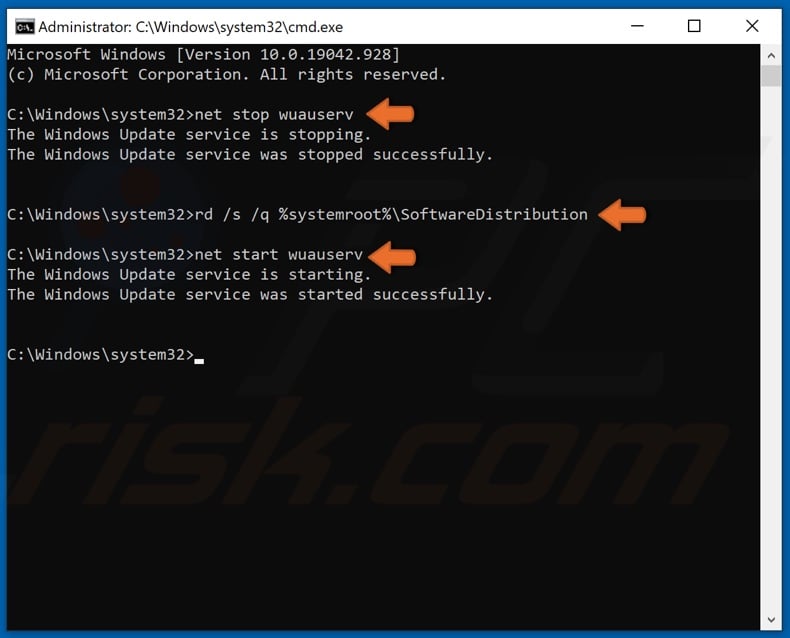
3. In the Command prompt window, type in net stop wuauserv and press Enter.
4. Then, type in rd /s /q %systemroot%\SoftwareDistribution and press Enter to clear the Update cache folder.
5. Lastly, type in net start wuauserv and press Enter.
Solution 3. Perform a System File Checker (SFC) Scan
System File Checker or SFC is a built-in command-line tool that helps restore corrupted and missing system files. It downloads and replaces the corrupt and missing files that may be the cause for error 0x80073701.
1. Simultaneously hold down Windows+R keys to open Run.

2. Then, in the Run dialog box, type in CMD and hold down Ctrl+Shift+Enter keys to open the elevated Command Prompt.
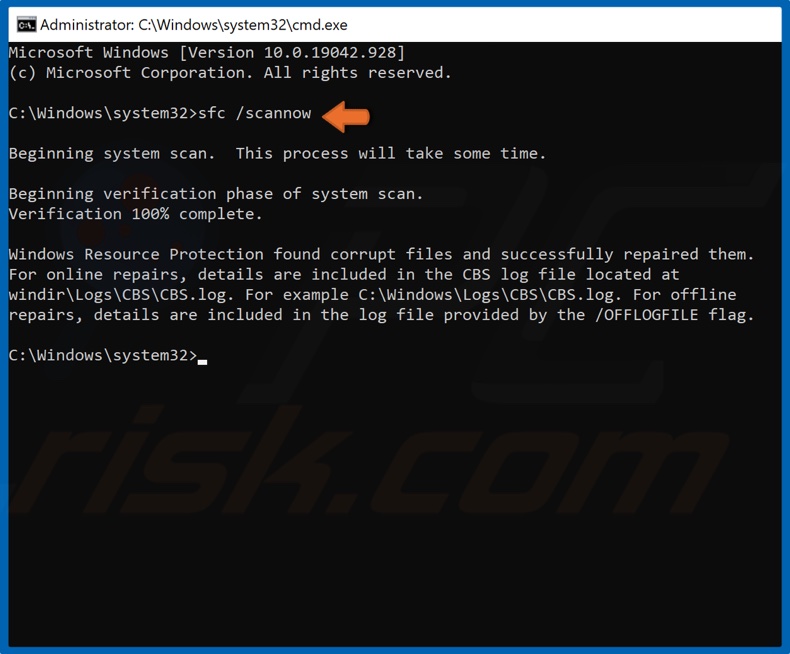
3. In the Command Prompt window, type in SFC /Scannow and press Enter.
4. Restart your PC.
Solution 4. Perform a Deployment Image Servicing and Management (DISM) scan
The Deployment Image Servicing and Management, a.k.a DISM, is a command-line tool designed to service a Windows Image. With this tool, you can fix corrupt system files.
1. Simultaneously hold down Windows+R keys to open Run.

2. Then, in the Run dialog box, type in CMD and hold down Ctrl+Shift+Enter keys to open the elevated Command Prompt.
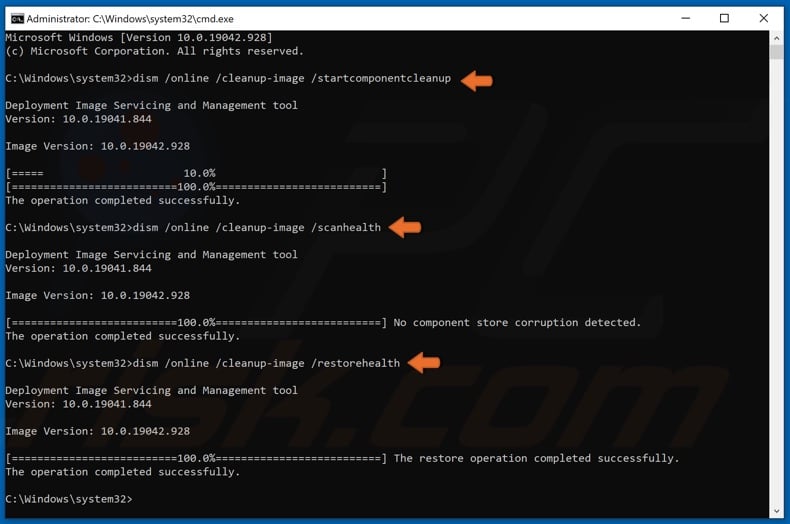
3. In the Command Prompt window, type in DISM /Online /Cleanup-image /StartComponentCleanup and press Enter.
4. Type in DISM /Online /Cleanup-Image /ScanHealth in the Command Prompt window, and press the Enter key.
5. Then, type in DISM /Online /Cleanup-Image /RestoreHealth and press the Enter key.
6. Restart your PC and try updating Windows.
Solution 5. Reset Windows Update Components
1. Simultaneously hold down Windows+R keys to open Run.

2. Type in CMD in the Run dialog box and hold down Ctrl+Shift+Enter keys to open the elevated Command Prompt.
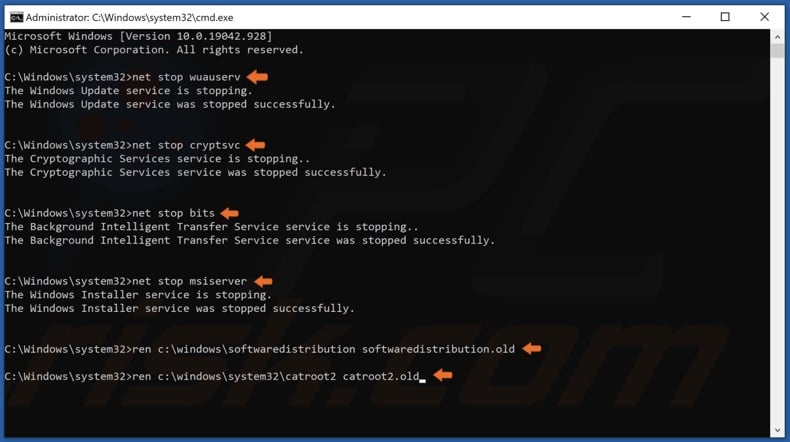
3. Type in the commands listed below, and press the Enter key after entering each one:
- net stop wuauserv
- net stop cryptSvc
- net stop bits
- net stop msiserver
Then, rename the SoftwareDistribution and Catroot2 folders.
4. Type in ren C:\Windows\SoftwareDistribution SoftwareDistribution.old and press the Enter key.
5. Then, type in ren C:\Windows\System32\catroot2 Catroot2.old and press the Enter key.
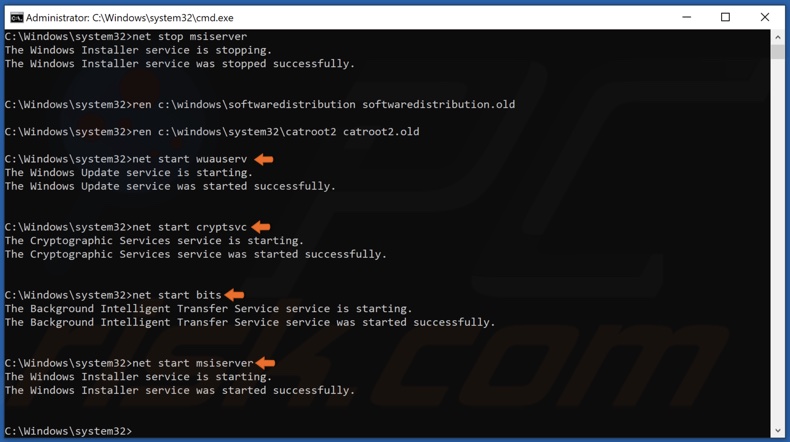
6. Type in the commands listed below, and press the Enter key after entering each one to restart the previously stopped services:
- net start wuauserv
- net start cryptSvc
- net start bits
- net start msiserver
7. Try updating windows once you've reset the Windows Update components.
Share:

Rimvydas Iliavicius
Researcher, author
Rimvydas is a researcher with over four years of experience in the cybersecurity industry. He attended Kaunas University of Technology and graduated with a Master's degree in Translation and Localization of Technical texts. His interests in computers and technology led him to become a versatile author in the IT industry. At PCrisk, he's responsible for writing in-depth how-to articles for Microsoft Windows.

▼ Show Discussion